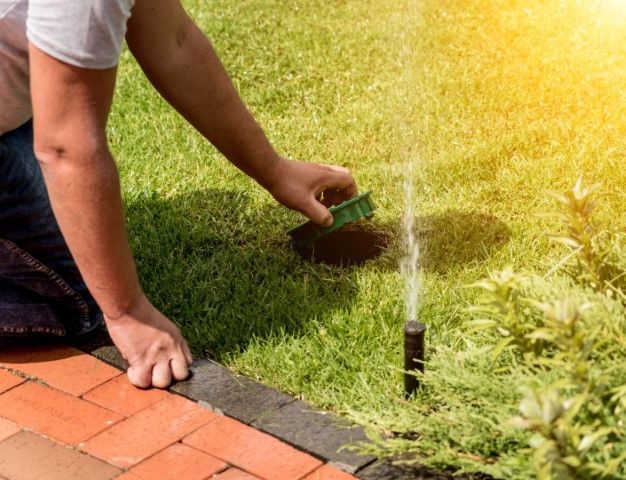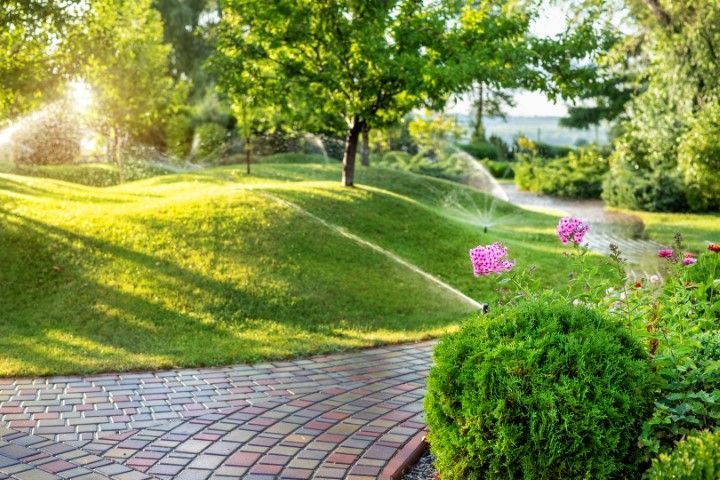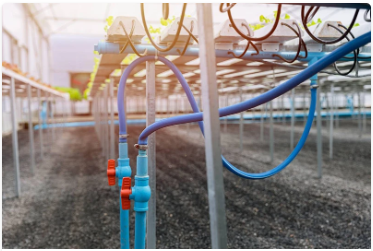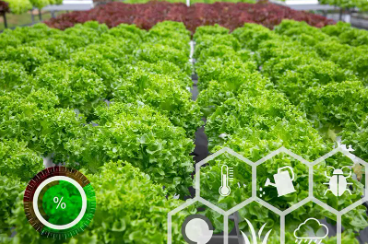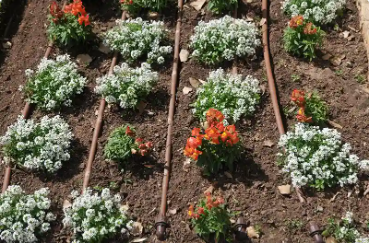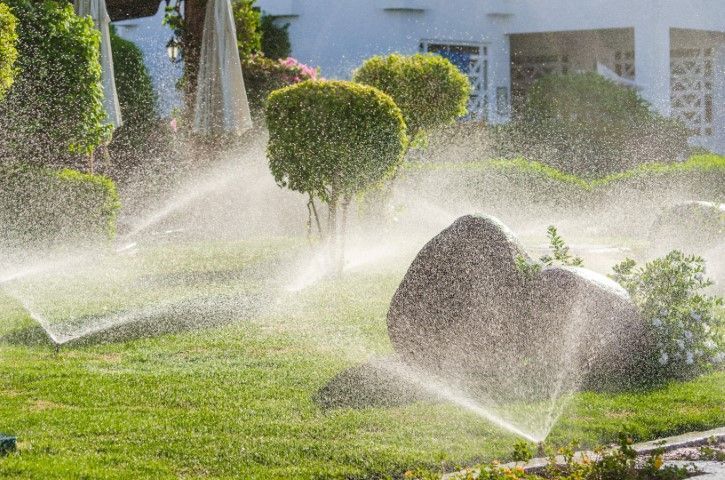Top 10 Common Sprinkler System Problems and How to Fix Them
Top 10 Common Sprinkler System Problems and How to Fix Them
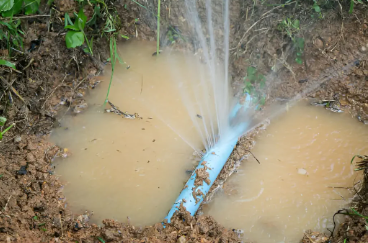
You’ve probably encountered a few sprinkler system issues, whether it’s a clogged head, a leaky valve, or uneven water distribution that leaves your lawn looking less than lush. Fixing these problems doesn’t have to be a daunting task. Knowing the common issues and how to tackle them can save you time, water, and money. However, some fixes require a bit more than just a manual tweak; they need a strategic approach to ensure your system runs efficiently. So, what’s the first step you should take when you notice your sprinkler system isn’t performing optimally? Let’s start with the basics and work our way through the challenges.
Clogged Sprinkler Heads
Over time, your sprinkler heads can become clogged with dirt and debris, significantly reducing their efficiency. To tackle this, you’ll need to employ some maintenance tips and troubleshooting techniques that ensure your system runs smoothly. First, routinely inspect each sprinkler head for visible signs of blockage. If you spot any, it’s time for a DIY fix.
Start by turning off the water supply to prevent any accidents. Carefully unscrew the nozzle or the entire head, depending on the model. Use a small brush or a blast of water to remove the debris from the nozzle. For tougher clogs, soaking the nozzle in vinegar can help dissolve mineral deposits.
To prevent future clogs, consider installing filters if your system doesn’t already have them. These filters catch debris before it reaches the nozzles, reducing the need for frequent cleanings. Additionally, regular flushing of your system can help clear out any accumulating sediment.
Leaky Valves and Pipes
When you notice wet spots or pooling water in areas near your sprinkler system, you’re likely dealing with leaky valves or damaged pipes. To tackle valve leaks, you’ll first need to locate the source by checking for water seepage around the valve box. For pipe damage, it’s essential to determine the extent of the damage and replace or repair the affected sections to prevent further water loss and system inefficiency.
Identifying Valve Leaks
You’ll often notice signs of valve leaks in your sprinkler system through unexpected water pooling or unusually damp areas near the valve assemblies. This is a clear indicator that your system’s efficiency is compromised, affecting both water conservation and the health of your lawn.
To tackle this, you should first conduct a thorough valve maintenance check. Begin by manually operating each valve to monitor its response. If a valve fails to open or close properly, or if there’s a hissing sound, which indicates air escaping, these are telltale signs of internal problems like a worn diaphragm or a broken seal.
Next, closely inspect for any wet spots or mildew around the valve boxes; these could point to leaks at the connections. Sometimes, tightening the screws or replacing faulty gaskets can solve the issue. Also, ensure there’s no debris obstructing the valve’s operation.
Regular troubleshooting can save you a lot of water and reduce unnecessary irrigation. Make it a habit to check your system seasonally or after any significant weather changes. Addressing these issues not only prolongs the life of your irrigation system but also helps in maintaining an efficient water usage pattern, aligning with optimal irrigation tips.
Repairing Pipe Damage
If your sprinkler system’s pipes are leaking, promptly identifying and repairing the damage is crucial to maintaining system efficiency and preventing water waste. You’ll need to decide between DIY pipe repair techniques and hiring a professional. If the damage is minor, such as small leaks or cracks, you can likely handle it yourself with some basic tools and supplies like pipe sealant or repair clamps.
Start by turning off the water supply and draining the affected pipes. Clean the damaged area thoroughly before applying any sealant or installing a clamp. This ensures a better seal and a longer-lasting repair. Always follow the product instructions for the best results.
However, if the damage is extensive or the pipe system is complex, it’s wise to call in a professional. They have the expertise and equipment to make durable repairs, especially in hard-to-reach areas or where high-pressure water flow is a factor.
To prevent future pipe damage, schedule regular maintenance checks and immediately address any issues like high water pressure or signs of corrosion. Installing high-quality pipes and fittings from the start also reduces the likelihood of frequent repairs, saving you time and money in the long run.
Low Water Pressure
Low water pressure in your sprinkler system often indicates a problem in the water lines or valves. If you’re experiencing this issue, it’s crucial to first check if there are any leaks or obstructions in the pipes. It’s also possible that your system’s design doesn’t effectively support the water flow required for optimal operation. You might need to consider a redesign or adjustment of the mainline to accommodate better pressure distribution.
Another common culprit could be issues with the pump or the pressure regulator. Pumps that aren’t functioning properly due to wear or damage can’t maintain adequate pressure, and a faulty pressure regulator might not be modulating the flow as it should. Check these components for any signs of malfunction or wear.
Additionally, the water source itself can impact pressure. If the source isn’t providing enough flow, or if there’s a significant demand on the supply from other sources at the same time, your system will likely suffer. You might need to adjust your irrigation schedule or look into supplemental water storage solutions.
Ensuring your sprinkler system has sufficient water pressure is essential for efficient irrigation. Carefully assess each part of the system—pump, pressure regulator, water source, and system design—to identify and rectify any issues.
Sprinkler Heads Not Popping Up
If your sprinkler heads aren’t popping up, it’s likely due to blocked heads or low water pressure. You’ll need to check for debris obstructing the nozzle or filter and clean them thoroughly. Additionally, ensure that the water pressure in your system meets the manufacturer’s recommended levels to guarantee optimal performance.
Blocked Sprinkler Heads
Why aren’t your sprinkler heads popping up? Often, the issue stems from blocked sprinkler heads, a common yet fixable problem. When debris or dirt clogs the nozzles, it disrupts the water flow crucial for your irrigation system’s efficiency. This blockage can prevent sprinkler heads from elevating and distributing water evenly across your lawn.
To tackle this, you’ll need to inspect each sprinkler head individually. Turn off your irrigation system and carefully remove the head in question. Look inside for any debris, such as grass clippings, mud, or small stones, that might be causing the blockage. A simple rinse under a tap often dislodges this material. However, for more stubborn clogs, use a small wire or needle to gently clear the nozzle holes.
Once cleared, reattach the sprinkler head and test the system to ensure that water flow is restored and the head pops up correctly. Regular maintenance, like checking and cleaning your sprinkler heads seasonally, will prevent future blockages and keep your system running smoothly. Remember, a well-maintained irrigation system not only saves water but also ensures your garden remains lush and healthy.
Low Water Pressure
Another reason your sprinkler heads might not be popping up is due to low water pressure in your system. This issue can stem from various sources, such as leaks in your irrigation lines or an inadequately sized pump. To tackle this, you’ll first need to confirm that low pressure is the culprit. Check your system’s pressure gauge while it’s running; if the reading is below the manufacturer’s recommended level, you’ve pinpointed the problem.
To address low water pressure, start by inspecting each section of your irrigation system for leaks. Patch up any holes or replace damaged pipes as necessary. If your system is leak-free, consider installing a larger pump or an additional booster pump to enhance water flow.
Next, focus on water pressure regulation by adjusting the pressure regulator on your main supply line. Setting it correctly ensures that water is distributed evenly and efficiently, preventing waste and ensuring optimal performance.
Lastly, for thorough irrigation system optimization, reevaluate your system’s design. It might be necessary to rezone your system or adjust the timer settings to accommodate for variations in water pressure throughout the day. These adjustments can significantly improve the efficiency of your sprinkler system, ensuring that it operates at peak performance.
Overspray and Water Wastage
How often have you noticed your sprinkler system watering the sidewalk more than your lawn, leading to unnecessary water wastage? This common issue not only hikes up your water bill but also contributes to soil erosion, undermining your garden’s health and aesthetics. Tackling this starts with adjusting your sprinkler heads. Ensure they’re correctly aimed to maximize water conservation and target only the areas that need moisture.
Implementing drip irrigation solutions can be a game-changer, especially for targeted watering in flower beds or vegetable patches. Drip systems deliver water directly to the base of plants, reducing evaporation and minimizing runoff. This method is particularly effective in preventing soil erosion, as it allows the water to seep slowly into the ground, nourishing roots without disturbing the soil structure.
Moreover, integrating smart technology into your irrigation setup can significantly cut down on overspray. Smart sprinkler controllers adjust watering schedules based on local weather predictions and real-time data, ensuring that your garden receives the precise amount of water it needs, no more, no less. By upgrading to these intelligent systems, you’ll not only save water but also promote healthier plant growth and soil stability.
Uneven Water Distribution
Uneven water distribution often results from improperly aligned or spaced sprinkler heads, leading to dry spots and less effective irrigation. But that’s not the only cause. Soil compaction and root intrusion can significantly affect how water permeates through the landscape. If the soil is too compacted, water can’t seep down to the roots effectively. To address this, you should aerate your soil regularly to alleviate compaction and enhance water absorption.
Furthermore, varying levels of sun exposure and shade interference can create inconsistent moisture levels across your yard. Areas under heavy shade or high sun exposure won’t receive water uniformly due to evaporation and reduced transpiration. To combat this, adjust your watering schedule based on the specific needs of different garden zones. Consider installing shade-tolerant plants in darker areas or setting up a drip irrigation system that targets the roots directly, minimizing evaporation.
Regularly check your system for any signs of root growth blocking the water paths and consider root barriers if necessary. By understanding and tackling these underlying issues, you’ll ensure that your irrigation system delivers water uniformly, making your lawn lush and healthy. Remember, consistent monitoring and adjustment are key to overcoming uneven water distribution.
Misaligned Spray Patterns
Misaligned spray patterns in your sprinkler system can exacerbate water distribution problems, leading to further inefficiencies in irrigation. When your sprinkler heads aren’t aligned correctly, they can spray water onto sidewalks, and driveways, or miss patches of your lawn entirely. This not only wastes water but also can lead to uneven growth or drying out of certain areas.
To correct this, you’ll need to check each sprinkler head. Start by observing the spray pattern while the system is running. Look for heads that aren’t covering their intended areas or are spraying onto non-landscape surfaces. Once identified, turn off the system to make adjustments safely.
Adjusting angles is crucial for proper alignment. Many sprinkler heads have a screw or a series of screws that you can turn to adjust the spray angle or direction. Use a screwdriver to make small adjustments and check the spray pattern again. For rotatory sprinklers, ensure they rotate fully and adjust any stops that might be limiting their range.
Sometimes, realignment might require repositioning the sprinkler heads physically. Dig around the head carefully, adjust its angle or position, and then re-bury it at the correct height. Always ensure it’s level with the ground to prevent damage and ensure even coverage.
Controller Malfunctions
Controller malfunctions can disrupt your sprinkler system’s operation, leading to erratic or non-functional watering cycles. Often, these malfunctions stem from programming errors or electrical issues, which you can usually resolve with a few troubleshooting tips and common fixes.
First, check if there’s a simple programming error. Ensure that your settings are correct for the time, date, and watering intervals. Misconfigured settings are often overlooked and can cause your system to behave unpredictably. If you’re unsure, refer to the manufacturer’s manual for specific programming guidelines. Resetting the controller to its default settings can also clear unforeseen glitches.
If reprogramming doesn’t solve the issue, you might be dealing with electrical problems. Begin by inspecting the controller for any visible signs of damage such as burned components or loose wiring. Ensure all connections are secure and corrosion-free. If your controller uses a battery backup, check the battery’s health and replace it if necessary.
If these steps don’t restore functionality, it might indicate a more severe electrical fault within the system. In such cases, employing a professional electrician or a certified irrigation specialist is advisable. They can perform a detailed diagnostic and implement the necessary repairs to get your system running smoothly again.
Broken Sprinkler Heads
Broken sprinkler heads can severely disrupt the efficiency of your irrigation system, leading to wasted water and uneven lawn coverage. When you notice a broken head, it’s crucial to tackle head replacement promptly. Start by identifying the type of sprinkler head that needs replacing; pop-up and rotor heads are the most common. Once you’ve identified the type, shut off the water supply to prevent further damage and water waste.
For head replacement, unscrew the damaged head from the riser. You might need pliers if it’s tight. Check for debris that could be blocking the riser. If you find any, clear it out to ensure your new head operates smoothly. Screw the new head onto the riser, making sure it’s secure but not overtightened, as this can damage the threads.
To prevent future issues, engage in regular maintenance. Inspect your sprinkler heads monthly for signs of wear or corrosion. Preventing corrosion is key and can be achieved by cleaning heads regularly and avoiding chemical exposure. Adjust sprinklers properly to avoid spraying on non-grassy areas which increases risks of corrosion and wear.
Lastly, troubleshooting involves regular checks. After replacing a head, turn on your system to ensure it’s working correctly. This quick check can save you time and further complications down the line.
Soggy Spots and Water Puddles
If you’re noticing soggy spots or water puddles in your lawn, it’s likely due to overwatering or poor drainage in your sprinkler system. Addressing these issues not only prevents water wastage but also protects the health of your lawn.
Firstly, evaluate your watering schedule as part of effective water conservation strategies. It’s crucial to adjust your sprinkler settings according to the season and the specific needs of your lawn. Overwatering can easily lead to water accumulation and soggy areas. Use a rain sensor to automatically adjust watering times based on weather conditions.
Next, consider the role of soil compaction and root intrusion, which can significantly hinder proper drainage. Aerating your lawn can relieve soil compaction, allowing water to seep more efficiently into the ground. If root systems from nearby trees are impeding drainage, you might need to reroute your sprinkler system or consult a professional for more targeted root management strategies.
Implementing drainage solutions is also vital. Assess the slope of your lawn and install French drains or catch basins if necessary to redirect excess water away from problem areas. This step ensures that water disperses properly, preventing accumulation and promoting a healthier lawn environment.
- Avoid These 5 Common Irrigation Blunders Every Homeowner Makes
- Your Go-To Guide for Picking the Perfect Sprinkler System for a Lush Lawn: Handy Tips and Tricks
- Impact of Climate on Irrigation System Design and Operation
- The Role of Soil Moisture Sensors in Irrigation Efficiency
- Cost-Effective Irrigation Solutions for Small Gardens
